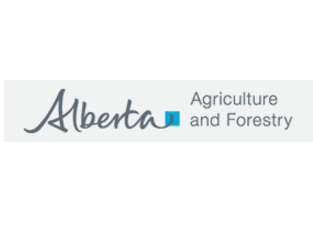Source: Alberta Agriculture and Forestry
Ways to lessen the stress created by the latest cold snap on livestock.
Barry Yaremcio, beef and forage specialist at the Alberta Ag-Info Centre, says to start by adjusting rations to meet requirements, as there is a limit to the amount of heat cattle can produce by digesting feed.
“Cattle can stay warm down to -20 C without wind chill, and the heat from digestion when they consume their feed will keep them warm. I am referring specifically to cattle, but these principles apply to other animals that are staying outside.”
It is a natural response for animals to eat more feed when it gets cold. Provide extra hay or silage along with extra grain. Feed intake changes when the temperature drops below -20 C.
“You can’t just let them pick extra hay or pick straw off the bedding pack to make up the intake differential,” he adds. “Straw is a low protein, high fibre, low energy feed that takes a long time for the animals to digest. If they eat extra straw, the total protein content in the ration goes down, and bacteria can’t digest the fibre. In reality, their feed intake in reality may drop 2, 3 or 4 pounds a day, and the animals will drop condition by eating only extra straw.”
“At -30 C, increase grain intake by an extra 2 lb of grain per head per day over and above what was previously being fed at -20 C. If temperatures drop to -40 C, 4 lb of extra grain per head per day needs to be added.”
Thin animals get cold faster than those that are in good shape, as they do not have the fat layer that provides insulation. “The recommendation of 4 lb of additional grain during the cold weather might have to be stepped up to 6 or 7 lb to maintain their body weight or hopefully get them to gain a little bit,” he explains. “It is difficult to do in cold weather but it is possible.”
Next, producers need to be concerned with the protein content of the ration.
“If the ration’s protein content is not adequate, the microbial populations cannot reproduce efficiently, as some of those microbes are needed to digest the fibre in the feeds. If the fibre is not digested efficiently, feed intake will be reduced, restricting the amount of nutrients the animal is getting.”
He says that one way to evaluate the protein content of the ration is to look at the manure. “If the ration contains adequate amounts of protein for proper rumen function, the ‘pats’ will be flat and appear normal. If the ration is deficient in protein, the pats will be more pyramid shaped and be rough in appearance.”
Providing shelter behind a wind fence and providing a lot of bedding helps reduce the amount of energy needed for an animal to keep warm. If possible, move the thinnest animals into a barn to protect them from the weather.
“A cow laying on snow could potentially lose 25% of her body heat, especially if that snow is wet or the animal has a dirty hair coat.”
He adds that the implications of not lessening the stress from cold temperatures could compromise the animals.
“During cold weather, cows can lose anywhere between 1 to 3 lb a day. If the cow is losing weight in the last trimester of pregnancy, there could be more calving difficulties because the cow’s muscles are not as strong as they should be. Nutrient requirements for a lactating cow increase by 25% compared to one in late pregnancy. That is when the large weight losses can occur.”
“Colostrum quantity – and possibly quality – will be compromised if the cow is losing weight prior to calving. The calf may not be as healthy or get up as rapidly after birth if the cow has lost weight in the cold weather. You could have a few more problems with disease. A cow with very little fat reserve will not be able to produce as much milk as one that is in good condition. The growth rate of the calf could probably reduce as well. Long term, if that cow stays skinny all the way through lactation, reproductive efficiency can be reduced by 20 to 30%.”
Contact
Connect with the Alberta Ag-Info Centre:
Hours: 8 am to 5 pm (open Monday to Friday, closed statutory holidays)
Toll free: 310-FARM (3276)









